Almandine: where is it mined and what properties does it have?
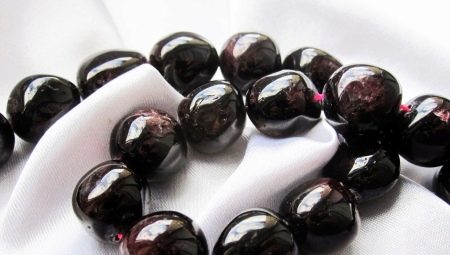
Almandine, famous for its deep saturated color, occupies a special place among semiprecious stones. This stone, which is a type of pomegranate, in addition to its visual appeal, impresses people with its magical and even healing abilities. Before buying jewelry and talismans made from such material, it is recommended that you familiarize yourself with exactly what purposes it is most often used for, who is it suitable for, and how to properly care for the stone.
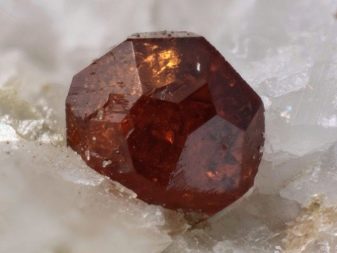
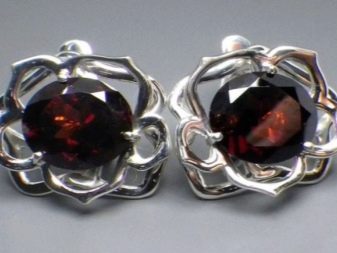
Characteristic
Almandine is a semi-precious stone. It, unlike other minerals known to the world, has one of the darkest shades of red. This type of pomegranate is considered to be noble. It is incredibly popular among jewelers and is known to the world under many names:
- Albanian ruby;
- becheta;
- carbuncle;
- Ceylon garnet;
- adelaide - ruby;
- anthrax;
- noble vinnytsia;
- Siberian pomegranate.
A unique characteristic of almandine is asterism. This is an optical phenomenon in which a starlight can be seen in a gemstone under the rays of light.
These stones vary in size from a few millimeters to 4 cm or more.
Almandine can become transparent after special processing. And also it gets a beautiful shine.
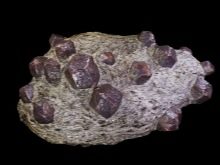

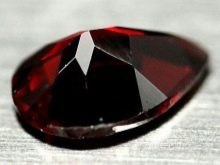
Origin story
There is more than one version about the origin of this mineral.
The most popular options include several.
- The stone, according to the Greeks, originally belonged to two goddesses: Hestia and Demeter, who rule over fire and earth.As a sign of worship of these goddesses, the inhabitants of Ancient Greece began to use gems as adornments, and also decorated clothes and hats with their help.
- Another legend is the story of a snake woman, instead of eyes, she had almandine crystals. Going into the water, she left them on the shore, and people tried in vain to take possession of them.
- The most truthful version is not a legend. The deposit of this stone was found near the city of Alabanda on the coast of the Aegean Sea.
It was in this place that the first mining of the mineral began.
And its name reflects the distorted name of the area. Initially, this stone was very expensive, and it could be seen only among the representatives of the nobility.


Differences from grenade
Almandine has no cardinal differences from garnet. However, it should be noted that this particular stone is the hardest of all the representatives of the garnet group. Both almandine and garnet symbolize passion, but each of the stones is responsible for its different components. If the pomegranate protects the wildness and riot of feelings, then the almandine symbolizes passion at a deeper level. It is also worth noting that the luster of almandine is brighter than that of garnet. In addition, asterism is not inherent in the grenade.
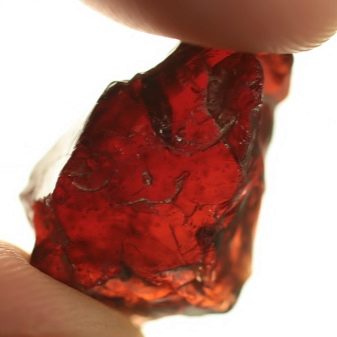

Views
The main criterion by which a number of varieties of this semi-precious stone can be distinguished is color.
Its intensity depends on the amount of iron in the stone. The more it is, the brighter the red tone of the almandine becomes.
The most common shades are considered red, purple, cherry. The last two tones do not represent a pure color, but rather the ebb inherent in this mineral.
Some colors are rarely seen. These include black. And also transparent stones rarely come across. They are classified as jewelry. The most valuable are red gems.
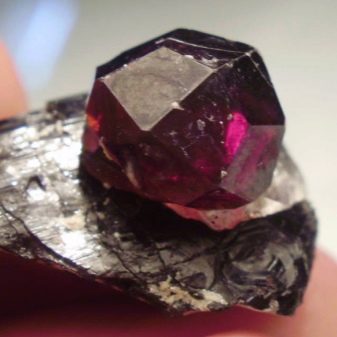
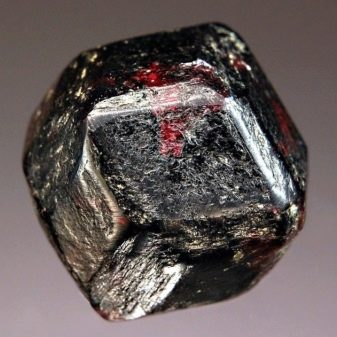
Violet-tinged red almandine is very common. In some products made of the mineral, one can observe not an intense red, but a slightly orange tone. Among the most famous varieties of this stone are the following:
- star garnet;
- pyrope;
- spessartine;
- demantoid;
- Malaya;
- rhodolite;
- tsavorite.
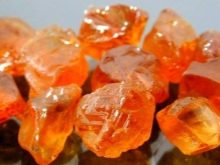

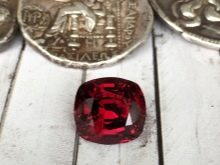
There are also more rare types of almandine:
- hydrogrossular;
- melanitis;
- hessonite;
- grossular;
- topazolite.
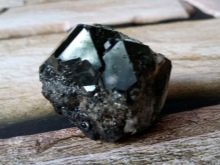
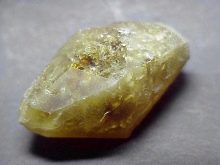
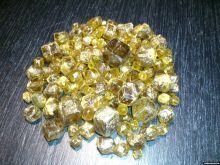
Place of Birth
Almandine reserves on the planet are quite large, it is mined in various territories. Deposits are literally scattered around the world, but among them it is worth highlighting separate areas.
- Myanmar is the site of the main stone deposit.
- Territory of Karelia and Siberia.
- Finland.
- Sri Lanka island. It is characterized by the extraction of a deep red almandine, which is called the "Ruby of Ceylon".
- Sweden is famous for the extraction of brown stones.
- Other fishing locations include Alaska, Antarctica, Africa and Greenland.
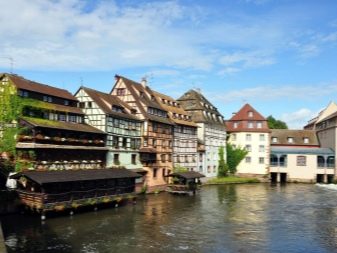

Properties
Like many semiprecious stones, almandine has a set of unique properties that can be divided into 3 groups: physical, healing and magical.
Physical
This group of properties includes scientifically proven physical indicators that characterize the main features of a stone from the point of view of the expediency of its use for the manufacture of jewelry and other products. The main characteristics are:
- hardness indicator - 7.5;
- cubic system;
- imperfect cleavage;
- transparency values ranging from transparent to opaque;
- density index - 4.3 g / cm 3;
- concave or uneven fracture;
- glossy resinous or glassy type;
- refractive index of light - 1.8.
The composition of this mineral includes elements such as silicon, iron and aluminum. And also magnesium and calcium ions may be present.

Magical
Even the ancient Indian yogis believed that almandine has a very strong positive energy, which can often change a person's emotional state for the better and have a beneficial effect on certain situations. At this level, the mineral can provide the following types of relief to those who believe in its properties:
- creating emotional balance;
- gaining self-confidence;
- assistance in realizing oneself as a harmonious personality and in acquiring the qualities inherent in a versatile person;
- getting rid of fears;
- protection from troubles;
- controlling negative emotions, such as anger;
- giving the ability to remain faithful;
- general improvement in mood;
- protection from evil and negativity;
- a decrease in the level of anxiety;
- protection from unpleasant and dangerous meetings on the road.

Significance is also attributed to the shades of the stone, which, according to the assumptions of the Indians, influence the creation of one or another effect.
- If the color of the almandine is scarlet or bright orange, then such a stone protects from adverse physical influences, and is also able to bring victory.
- If the color of the stone is between red and brown, then its influence is more directed on the spiritual state of a person. The mineral promotes harmony.
- It is better to use a mineral to increase self-confidence and get rid of fears. with a raspberry or purple tone.

Therapeutic
Although officially medicine does not confirm the healing properties of almandine, it also does not reject them.
The ability to have a beneficial effect on health with the help of this mineral was identified back in ancient India and is still being realized, which indicates the effectiveness of using the stone in treatment.
Almandine is able to exhibit the following healing effects:
- improving metabolism;
- increased visual acuity;
- normalization of blood circulation processes;
- acceleration of regeneration during wound healing;
- mitigation of allergic reactions;
- improving the activity of the thyroid gland;
- weakening ailments such as sciatica and arthritis;
- increased sexual performance;
- strengthening the nervous system;
- analgesic effect;
- improving the effectiveness of the treatment of diseases of the intestines and kidneys, as well as the liver.

Who is it suitable for?
If we consider the compatibility of people with this stone from an astrological point of view, then we can see that almandine is not combined with all signs of the zodiac equally. Aries patronizes this mineral, helping them gain more energy, as well as promoting career and personal development. The stone has an equally pleasant effect on Lions and Capricorns. He endows the former with courage and tone, and the latter adds charm and charm that help in communication.
Almandine works well on Virgo if they want to get rid of anxiety, insomnia, and also find harmony with themselves and the world.
The mineral helps Sagittarius to become decisive, as well as improve the general condition of the body. Almandine is able to help Aquarius to realize plans for a career and personal life. He is also a good ally for Taurus, Libra and Scorpio. But representatives of such zodiac signs as Cancer and Pisces should not use this stone. It is better for them to opt for garnets or other green stones. Almandine can, on the contrary, throw these signs out of balance.
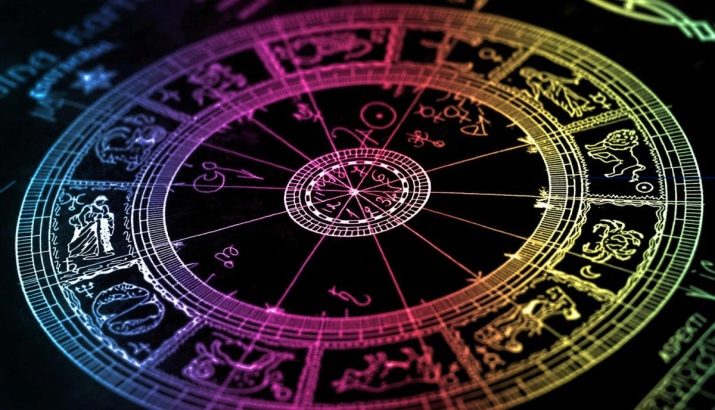
Some view the stone in terms of name compatibility. Among Russians, Alla is the most successful female option.... The mineral helps the owners of this name to find indulgence and softens their character, as well as endows with inner strength. Among male names, the stone patronizes Vasily, bringing him success in love affairs and endowing him with courage and vitality.
How to identify a fake?
Even though the cost of almandine is not very high, some scammers still counterfeit this mineral. In order not to fall for their tricks, you should take into account several signs when choosing a stone and independently check the product in accordance with them.
- Bring the stone to the light. If, with its direct impact, the effect of asterism is not observed, then this is a fake.
- Notice how saturated the color of the stone looks. A natural mineral has a very deep tone. You can also check the product for the presence of glass luster: as a rule, counterfeits do not have it.
- Run the stone over the glass surface before purchasing. Due to its strength, no trace will remain on a real almandine, and the glass will be damaged. If you do not observe such a result, then you have a fake stone in front of you.
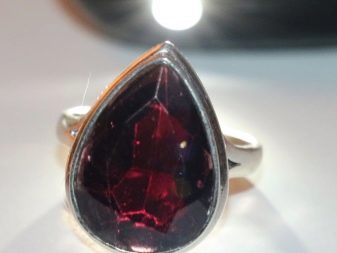

Subtleties of care
In order for the almandine to remain your talisman for a long time, you should not forget to take proper care of this stone. It assumes that certain conditions are met.
- The mineral should be protected from temperature extremes. After them, cracks may form on the surface of the gem.
- To cleanse almandine, use a soft cloth and a soapy solution prepared in water at room temperature. After cleaning with soapy water, wipe the stone with a damp cloth and then wipe it dry. This procedure should be carried out at least once every 30 days, or the mineral should be stored in a place where dust does not penetrate.
- You should not leave the stone under the open sun for a long time: it does not tolerate long exposure to bright rays very well.



How the stone affects a person, see below.








